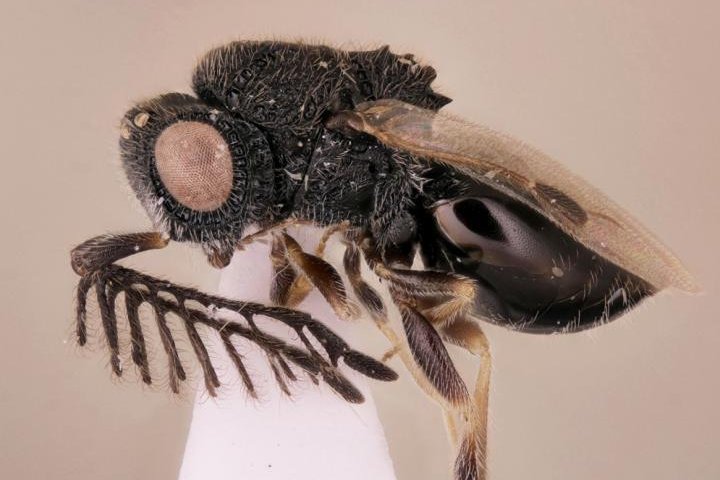Scientists believe the newly discovered parasitic wasp species uses ridges on its back to saw its way out from the inside of its host. Photo by Carolyn Trietsch/Penn State
Jan. 31 (UPI) -- Scientists have discovered a tiny new species of wasp in Costa Rica. Their analysis suggests the wasp has a unique way of escaping its host once it's ready to fly away: it saws its way free.
The discovery was made after scientists at Penn State University's Frost Museum borrowed and analyzed several wasp specimens from the Natural History Museum of London. The wasps were first collected in 1985 and they've never been observed in the wild, making it difficult to interpret the species' unique physiology.
Nevertheless, their analysis of Dendrocerus scutellaris -- published this week in the journal Biodiversity Data Journal -- did yield some unique conclusions.
Researchers believe the species is an endoparasitoid, which means it inserts its eggs inside a host. Once hatched, the larva feed on the host's insides. Even after getting their fill, endoparasitoid larvae may live inside their host until they fully mature.
Unlike most endoparasitoid wasps, the newly discovered species is without pointed mandibles. It can't chew its way out of its host body like other wasps. Scientists believe the species uses a series of ridges on its spine to saw its way out.
Once the wasp escapes, it begins the process of starting the lifecycle all over again: looking for a mate and then another host.
Without observing the species in the wild, scientists aren't able to determine the species' preferred host. But they believe the wasp's uniquely elaborate antennae play a role in findings and selecting both mates and hosts.
"While their lives may sound gruesome, parasitoid wasps are harmless to humans and can even be helpful," scientists explained in a news release. "Depending on the host they parasitize, parasitoids can benefit agriculture by controlling pest insects like aphids that damage crops."
Scientists have previously used parasitic wasps to combat emerald ash borer beetles, which have devastated ash tree populations throughout the United States. Researchers have also encouraged the use of parasitic wasps to control fly populations on horse farms.















